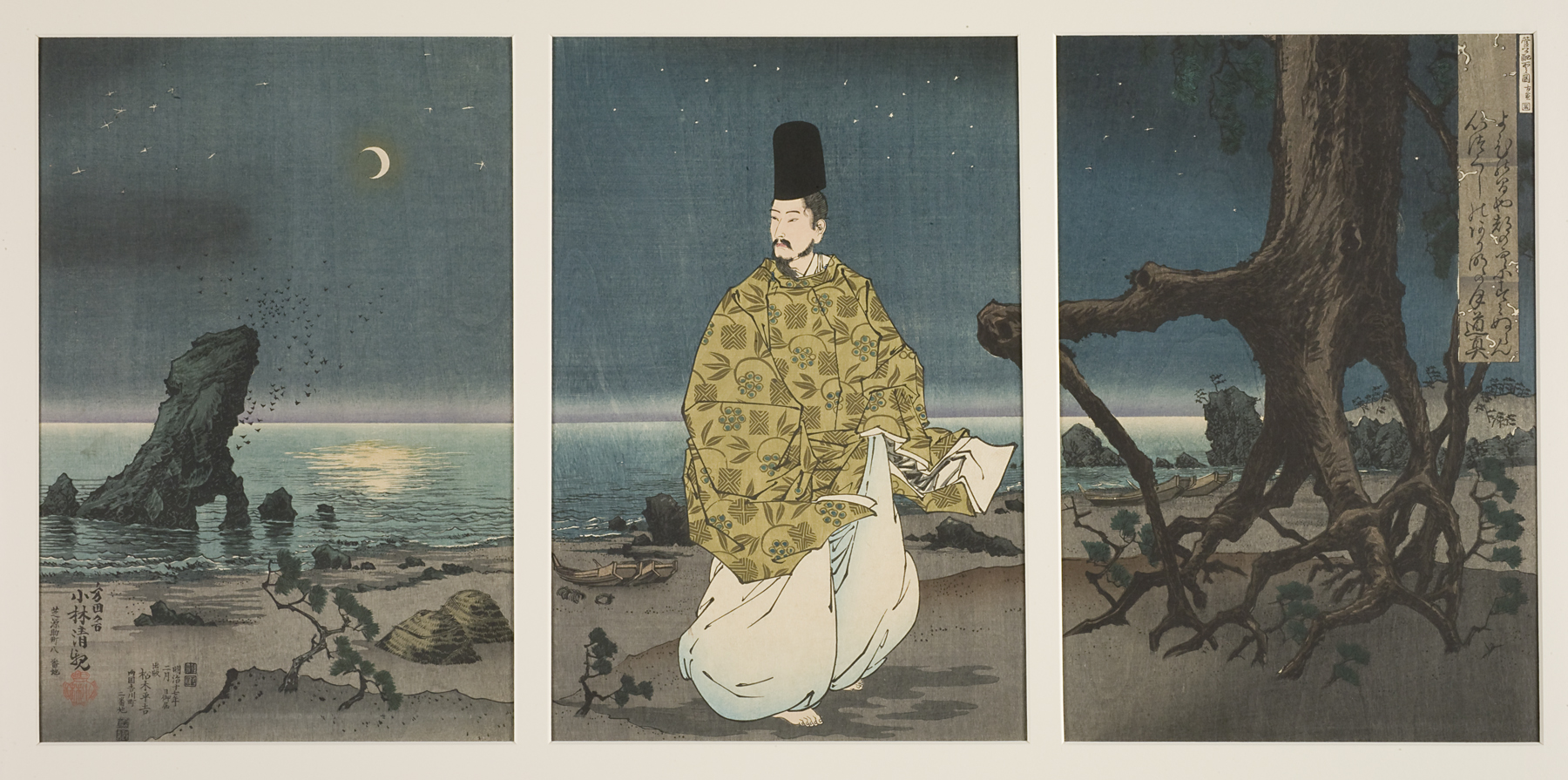Sugawara no Michizane (The Poet Sugawara no Michizane), Kobayashi Kiyochika
Artwork Overview
Kobayashi Kiyochika, artist
1847–1915
Sugawara no Michizane (The Poet Sugawara no Michizane),
1884, 2nd month, Meiji period (1868–1912)
Portfolio/Series title: Informal History of Japan
Where object was made: Japan
Material/technique: color woodcut; lacquer; mica
Dimensions:
Image Dimensions Height/Width (Height x Width): 370 x 750 mm
Image Dimensions Height/Width (Height x Width): 14 9/16 x 29 1/2 in
Mat Dimensions (Height x Width): 19 x 36 in
Image Dimensions Height/Width (Height x Width): 370 x 750 mm
Image Dimensions Height/Width (Height x Width): 14 9/16 x 29 1/2 in
Mat Dimensions (Height x Width): 19 x 36 in
Credit line: Museum purchase: R. Charles and Mary Margaret Clevenger Fund
Accession number: 1999.0204.a,b,c
Not on display
If you wish to reproduce this image, please submit an image request




